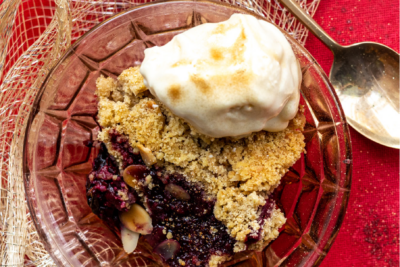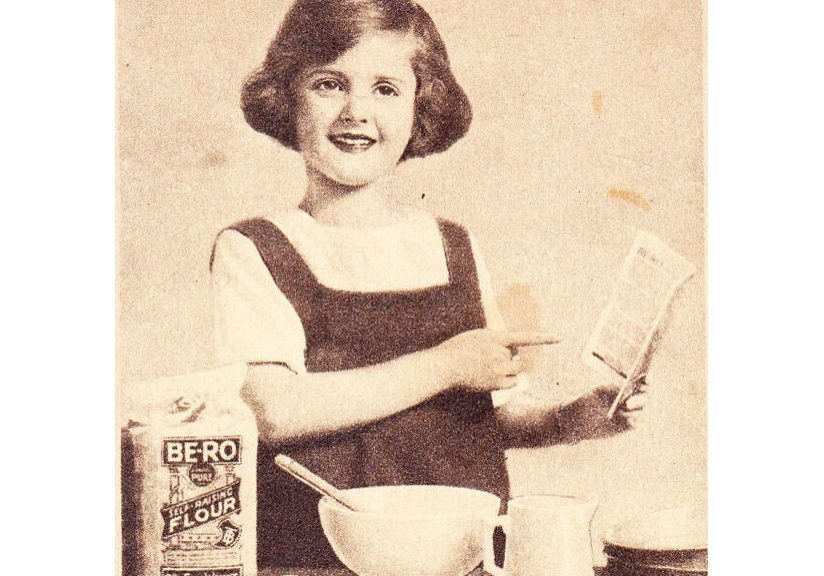
The Be-Ro Book
by Patricia Rogers
Before Nigella, Gordon, Jamie, Keith- even before Delia, Fanny Craddock and Graham Kerr, there was the BeRo book. It was the only recipe book in our house, other than a copy of Mrs Beeton which nobody ever looked at.
Before Nigella, Gordon, Jamie, Keith- even before Delia, Fanny Craddock and Graham Kerr, there was the BeRo book. It was the only recipe book in our house, other than a copy of Mrs Beeton which nobody ever looked at. Recipes were handwritten and passed on from one generation to the next. Most meals were made so regularly that there was no chance of the method being forgotten. Usually it meant putting meat in the oven, boiling your vegetables and deciding how you were going to cook your potatoes, which was not a complicated decision. They would be new and boiled in summer, old and mashed in winter.
People talked about getting to know their oven and baking was a science as well as a matter of pride.
Pasta came in tins of tomato sauce and it was always spaghetti, curry was something you only saw in the Vesta adverts on television, and anything else was likely to be labelled as “foreign muck” by my grandfather. Fish came from the fish shop in batter on Fridays. You bought a beef joint on Sunday and roasted it then ate it stewed, minced or sliced until there was none left. Simple.
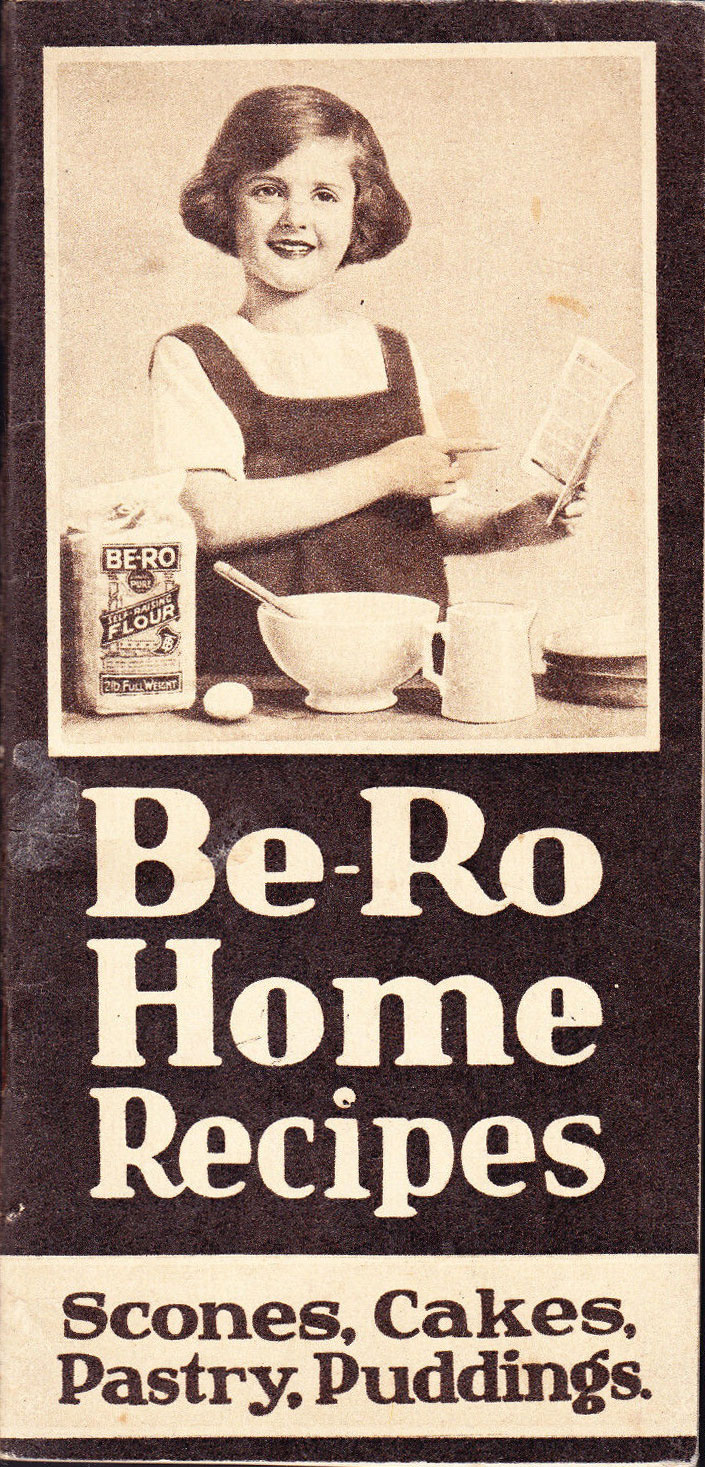
But when it came to baking you needed a book. It was a free gift used to promote BeRo flour (few people would have paid for a recipe book when they could just ask someone) just a slim half size paperback booklet.
Once you had your book, if you wanted to make something other than the constant stream of fruit pies that went in and out of the larder, you had all the information you needed. Baking was important. People talked about getting to know their oven and baking was a science as well as a matter of pride. Nobody ever boasted about the lovely roast dinner they had made- it was the same as the one which they had eaten last week and the same as the one which they (and just about everybody else) would be eating next week.
A mother would also be ashamed of herself if she didn’t manage to teach a daughter how to bake well.
What was the point? Everybody cooked. But baking was different. Not everyone could bake well naturally and ‘bought cakes’ were looked down on. God forbid that you would send a “bought cake” to one of the endless stream of cake stalls that set up at the bottom end of the village hall each year for one cause or another. That would be the height of shame. A mother would also be ashamed of herself if she didn’t manage to teach a daughter how to bake well. It was well known that you were either good at pastry or cakes but downright incompetence in either was not an option. It was common knowledge who made the best scones in a village- their handiwork would usually be recognised on sight- and it was not considered bad manners to ask who had made a cake if you weren’t sure before you agreed to buy it. There were no competitions- you didn’t need them as it was a constant process of peer review!
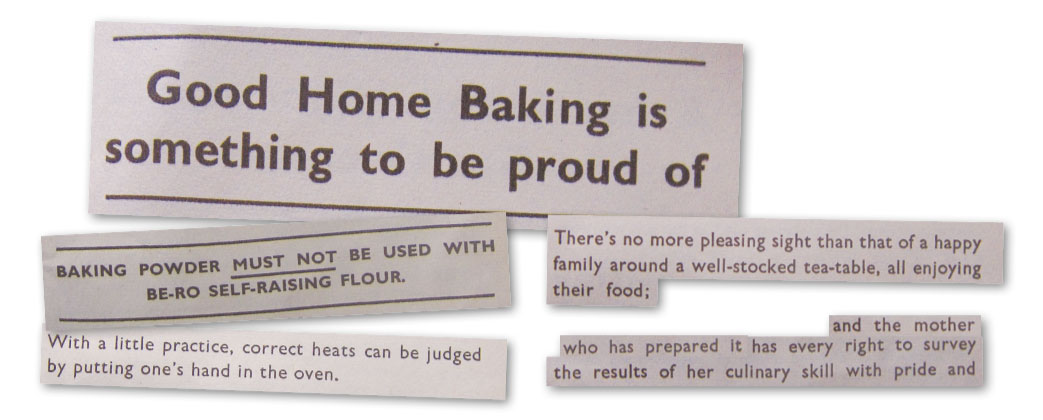
The book can tell you a surprising amount about the lives of the women that Be-Ro was selling to. They knew exactly how the women saw themselves. They were proud of their homes, even though they might have little and many of them were undervalued and lacking in fulfilment elsewhere. They needed to be made to feel important and this one little book does that. Looking after the home was a way of finding a purpose and a sense of importance but it was not always given the recognition that it deserved. Feeding a family well and healthily when money was tight was a real skill and it was a way to demonstrate love. Within living memory people had gone hungry and what cook books there were had been for the rich and fanciful.
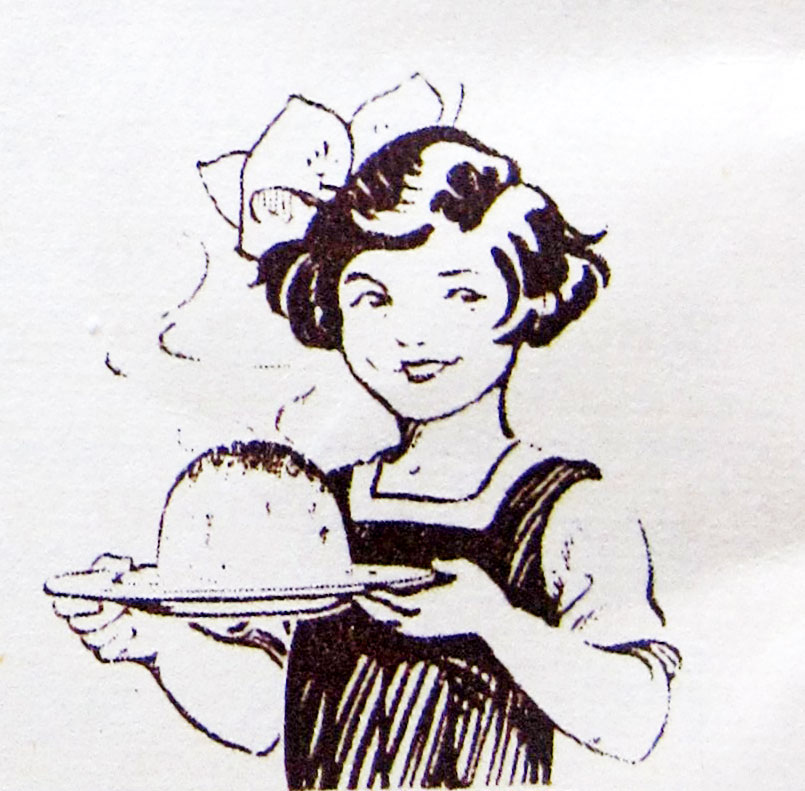
This book is aimed at women who have been sold an idea of themselves as a home maker but they are not necessarily sure that they have the skill or the money to achieve it. The world is changing fast and they need a helping hand. Be-Ro is working hard to flatter these women and persuade them that paying a little bit more for their flour will be worth their while. If they cook from this book they will also use plenty of it at a time when the first rumblings of the convenience food era were beginning to be heard. Cheap flour bought in large six pound bags was the standard fare. They were going to have to be persuaded that they and their daughters would find it easier to cook with Be-Ro flour and achieve better results. It obviously worked as Be-Ro flour is still made and it still sits there alongside much cheaper flour today. They were educating their readers too, alongside the flattery, it was even thought necessary to remind them that measuring out ingredients rather than just throwing them in until it looked like enough (the old way) was a good idea. The previous generation of ordinary home cooks would probably have condemned using scales as unnecessary messing about. Many of the recipes are simple. These were frugal times and buying fancy nuts or extra flavourings to be used once and then sit in the cupboard was potentially a waste- even if you could find them. Most of what is in the book can be made with fat, flour, sugar and eggs and there is a basic version of a cake or biscuit before you start adding the more expensive but easily found ingredients- cocoa, lemon, almonds, sultanas, dried peel or currants.
Even back then, when the book arrived spanking new on our doorstep to replace the old worn out one, there was already a nostalgic, hopeful quality to the writing and my goodness there certainly is now.
NorthernLife May/June 23





